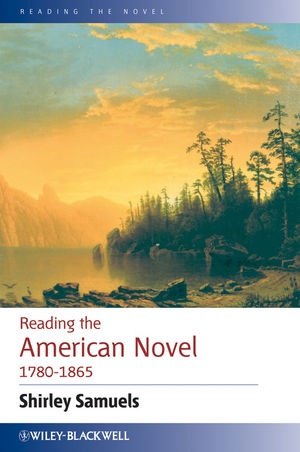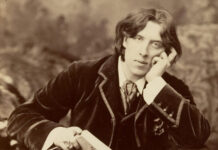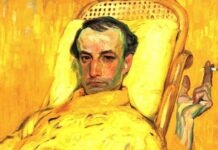on Reading the American Novel 1780-1865 by Shirley Samuels
Shirley Samuels’s Reading the American Novel 1780-1865 (2012) is an installment of the Reading the Novel series edited by Daniel R. Schwarz, a series dedicated to “provid[ing] practical introductions to reading the novel in both the British and Irish, and the American traditions.” While the volume does offer a “practical introduction” to the American novel of the antebellum era—its major themes, cultural contexts, and modes of production—its primary focus is the expansion of the American literary canon, particularly with regard to nineteenth-century women writers. In this respect, Samuels’s book continues a strong tradition of feminist cultural and historicist criticism pioneered by such landmark studies as Jane Tompkins’s Sensational Designs: The Cultural Work of American Fiction 1790-1860 (1985) and Cathy N. Davidson’s Revolution and the Word: The Rise of the Novel in America (1986). Tompkins’s explicit goal was to challenge the view of American literary history codified by F.O. Matthiessen’s monumental work, American Renaissance: Art and Expression in the Age of Emerson and Whitman (1941). In particular, Tompkins was concerned with reevaluating what she wryly termed the “other American Renaissance,” namely the “entire body of work” 1 of popular female sentimental writers such as Harriet Beecher Stowe, Maria Cummins, and Susan Warner, whose narratives “offer powerful examples of the way a culture thinks about itself.” 2
Recent decades have witnessed a growing scholarly interest in not only expanding the literary canon through the rediscovery of “lost” works by women writers such as Tabitha Gilman Tenney3
and P.D. Manvill4, to name a few, but also reassessing how the study of nineteenth-century sentimentalism and material culture might complicate, extend, and enrich our present understandings of the works of such canonical figures as Cooper, Hawthorne, and Melville. In this critical vein, Samuels asks, “what happens when a student starts to read Nathaniel Hawthorne’s The Scarlet Letter (1850), not simply in relation to its Puritan setting but also in relation to the novels that surround it?” (160). Reading the American Novel engages in both of these critical enterprises—rediscovery and reassessment of nineteenth-century American literature—by promoting what she describes as “not a sequential, but a layered reading” (153). In her “Afterward,” Samuels explains:
Such a reading produces a form of pleasure layered into alternatives and identities where metaphors of confinement or escape are often the most significant. What produces the emergence of spatial or visual relations often lies within the historical attention to geography, architecture, or music as elements in this fiction that might re-orient the reader. With such knowledge, the reader can ask the fiction to perform different functions. What happens here? The spatial imagining of towns and landscapes corresponds to the minute landscape of particular bodies in time. Through close attention to the movements of these bodies, the critic discovers not only new literatures, but also new histories” (153).
It is this “richly textured” (2) type of reading—a set of hermeneutic techniques to be deployed tactically across textual surfaces (including primary texts, marginalia, geographical locations, and “particular bodies in time” [153])—that leads, eventually, to Samuels’s, and the reader’s, greatest discoveries. The reader may find Samuels’s approach to be a bit disorienting initially. This is because Reading the American Novel traces not the evolution of a central concept in the way that Elizabeth Barnes, in States of Sympathy: Seduction and Democracy in the American Novel (1997), follows the development of seduction from late eighteenth-century to the domestic fiction of the 1860s. Rather, Samuels introduces a constellation of loosely-related motifs or what she later calls “possibilities for reading” (152)—“reading by waterways, by configurations of home, by blood and contract” (152)—that will provide the anchoring points for the set of disparate and innovative readings that follow.
Samuels’s introductory chapter, “Introduction to the American Novel: From Charles Brockden Brown’s Gothic Novels to Caroline Kirkland’s Wilderness,” considers the development of the novel from the standpoint of cultural production and consumption, arguing that a nineteenth-century audience would have “assumed that the novel must act in the world” (4). In addition, Samuels briefly introduces the various motifs, themes, and sites of conflict (e.g. “Violence and the Novel,” “Nationalism,” Landscapes and Houses,” “Crossing Borders,” “Water”) that will provide the conceptual frameworks for her layers of reading in the subsequent chapters. If her categories at first appear arbitrary, this is because, as Samuels points out, “the novel in the United States does not follow set patterns” (20). The complex conceptual topography introduced in Chapter 1 reflects the need for what she calls a “fractal critical attention, the ability to follow patterns that fold ideas into one another while admiring designs that appear to arise organically, as if without volition” (20).
The second chapter of the book, “Historical Codes in Literary Analysis: The Writing Projects of Nathaniel Hawthorne, Elizabeth Stoddard, and Hannah Crafts,” examines the value of archival research by considering the ways in which “historical codes . . . include[ing] abstractions such as iconography as well as the minutiae derived from historical research . . . are there to be interpreted and deciphered as much as to be deployed” (28). Samuels’s reading of Hawthorne, for example, links the fragmentary status of the author’s late work, The Dolliver Romance (1863-1864), to the more general “ideological fragmentation” (28) apparent in Hawthorne’s emotional exchange of letters with his editor, James T. Fields, concerning the representation of President Lincoln and his “increasing material difficulty of holding a pen” (25).
Samuels’s third chapter, “Women, Blood, and Contract: Land Claims in Lydia Maria Child, Catharine Sedgwick, and James Fenimore Cooper,” explores the prevalence of “contracts involving women and blood” (45) in three early nineteenth-century historical romances, Child’s Hobomok (1824), Cooper’s The Last of the Mohicans (1826), and Sedgwick’s Hope Leslie (1827). In these works, Samuels argues, the struggle over national citizenship and westward expansion is dramatized against the “powerfully absent immediate context” (45) of racial politics. She maintains that in such dramas “the gift of women’s blood” (62)—often represented in the guise of romantic desire and sacrifice— “both obscures and exposes the contract of land” (62).
Chapter four, “Black Rivers, Red Letters, and White Whales: Mobility and Desire in Catharine Williams, Nathaniel Hawthorne, and Herman Melville,” extends Samuels’s meditation on the figure of women’s bodies in relation to “the promise or threat of reproduction” (68) in the narrative of national identity; however, in her readings of Williams’ Fall River (1834), Hawthorne’s The Scarlet Letter (1850), and Melville’s Moby Dick (1851), the focus shifts from issues of land and contracts to the representation of water as symbolic of “national dispossession” (68) and “anxieties about birth” (68).
Samuels’s fifth chapter, “Promoting the Nation in James Fenimore Cooper and Harriet Beecher Stowe,” returns to the question of the historical romance, critically examining how Cooper’s 1841 novel, The Deerslayer, might be read as evidence of “ambivalent nationalism” (102), as it links “early American nationalism and capitalism to violence against women and children” (109). Samuels then considers the possibility of applying such ambivalence to Stowe’s abolitionist vision for the future of America limned in Uncle Tom’s Cabin (1852), a vision founded, in part, on Stowe’s conceptual remapping of the Puritan jeremiad onto the abolitionist discourse of divine retribution and national apocalypse (111-112). Because Stowe “set out to produce a history of the United States that would have become obsolete in the moment of its telling” (111), Samuels argues that we witness a break in the development of historical fiction caused by the Civil War, a “gap” during which “the purpose of nationalism with respect to the historical novel changes” (113).
Chapter six, “Women’s Worlds in the Nineteenth-Century Novel: Susan B. Warner, Elizabeth Stuart Phelps, Fanny Fern, E.D.E.N. Southworth, Harriet Wilson, and Louisa May Alcott,” and the book’s Afterward—in my opinion, the strongest sections of the book—survey a wide variety of nineteenth-century American women writers, including: Warner, Fern, Southworth, Wilson, Alcott, Caroline Kirkland, and Julia Ward Howe, among others. These discussions explore the ways in which writing functions as a type of labor which “gives the woman a face with which to face the world” (145). Samuels seeks to challenge the over-simplification of “separate spheres” ideology (153) by offering careful critical attention to the ways in which the labor of writing shapes identities in a multiplicity of distinct cultural locations. Hence, Samuels writes: “It is difficult to summarize motifs that appear in women’s writing in the nineteenth century. To speak of women’s worlds in the novel raises the matter of: what women?” (143).
Admittedly, there are moments when Samuels’s layered readings necessitate extended swaths of summary; the works that become the primary focus of Samuels’s analyses, such as Catharine Williams’ Fall River and the novels of Elizabeth Stuart Phelps and E.D.E.N. Southworth, may be unfamiliar to many readers. At other instances, the very intricacy, novelty, and ambitiousness of Samuels’s reading performances begin to challenge the reader’s desire for linear consistency. Her interpretive strategies, which prioritize reading at the margins, the textual rendering of historical codes, and provocative juxtapositions, produce, at times, a kind of tunneling effect. The reader is swept breathlessly along, relieved when the author pauses to say: “But to return to my opening question” (82). Ultimately however, Samuels’s critical approaches throughout this book pose an important challenge to our conventional ways of assigning value and significance to nineteenth-century popular fiction. By reading canonical works such as Moby Dick and The Scarlet Letter with and against the popular crime novel Fall River, for example, she is able to map similarities between all three works in order to create “a more complete fiction” (83). All of these novels, she writes, “lure New Englanders to die. To read them together is to recover the bodies of laboring women and men from watery depths” (83). This type of creative reading, to invoke Ralph Waldo Emerson’s phrase, allows us potentially to tease out significant conflicts and tensions in well-known works that might have otherwise remained invisible in a conventional reading. “What happens,” she asks, “when we remember that Captain Ahab is a father?” (83). Because Samuels offers not only insightful interpretations of nineteenth-century American novels but also introduces new and creative ways to read—and ways to think about the meaning of reading as a critical practice—Reading the American Novel must be viewed as a valuable addition to American literary scholarship.
_____
Sean J. Kelly is Associate Professor of English at Wilkes University. His articles on nineteenth-century American literature and culture have recently appeared in PLL, The Edgar Allan Poe Review, and Short Story.
_____
notes:
1. Tompkins, Jane. Sensational Designs: The Cultural Work of American Fiction 1790-1860. New York: Oxford UP, 1985. 147
Back to the essay
2. Ibid. xi
Back to the essay
3. Tenney, Tabitha Gilman. Female Quixotism: Exhibited in the Romantic Opinions and Extravagant
Adventures of Dorcasina Sheldon. 1801. Intro. Cathy N. Davidson. New York: Oxford UP, 1992.
Back to the essay
4. Manvill, P.D. Lucinda; Or, the Mountain Mourner: Being Recent Facts, in a Series of Letters, from Mrs.
Manvill, in the State of New York, to Her Sister in Pennsylvania. 1807. Intro. Mischelle B. Anthony. Syracuse: Syracuse UP, 2009.
Back to the essay






[…] Sean J. Kelly, “Adventures in Reading the American Novel.” […]
Great website and blog thank you for posting it.